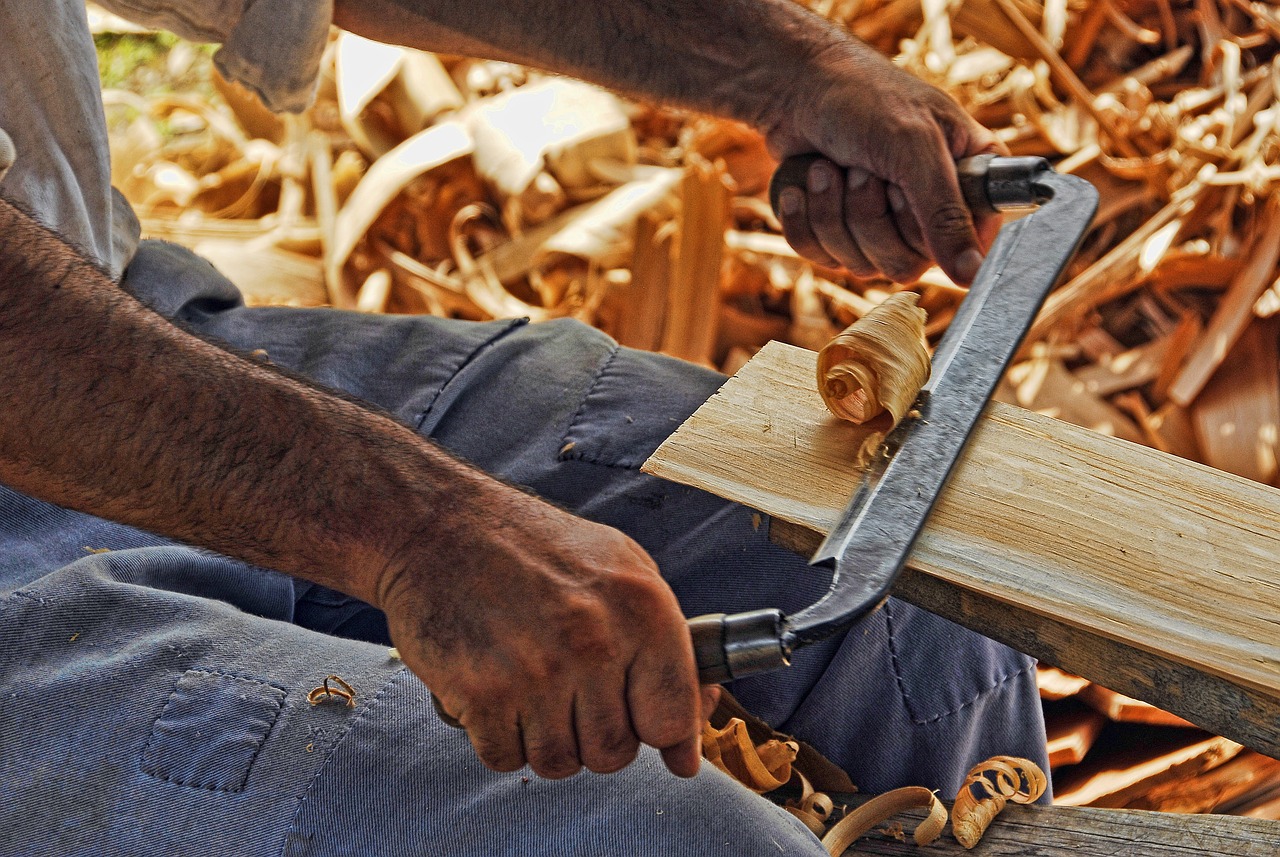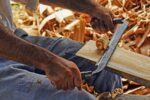Creating a compilation of the finest woodworking tools can be quite challenging as it encompasses various factors such as their suitability for general or specialized use, proficiency levels of DIY enthusiasts, expertise in fine cabinetry, or specifically targeting beginners. Moreover, the list may emphasize contemporary power tools or incorporate conventional manual tools.
There is not a single comprehensive list of top tools that are suitable for all users, applications, and budgets. However, there are several categories of tools that are consistently popular among various types of users. Beginning with popular choices such as saws, drills, planers, and sanders, we can compile a collection of some of the finest woodworking tools presently on the market, which will generally meet the needs of most individuals.
What to Consider When Choosing the Best Woodworking Tools
When shopping for woodworking tools, it is important to consider various factors such as budget, workshop space, compatibility with other tools, and safety features. However, quality and durability are generally considered to be the most crucial features to prioritize in tools. Additionally, having an understanding of the typical uses for different types of woodworking tools can aid in determining which tool will be most beneficial in a tool user’s shop.
Types of Woodworking Tools
The range of tools available is extensive, including both traditional hand joinery tools and the latest woodworking power tools. Here is a summary of each type of tool, their functions within their respective categories, and the key features to consider. Although some fundamental woodworking tools are not included in our list of top picks, it does not diminish their worth. Many tool users already possess the essential basics as part of a general DIY tool set, which are not specifically designed for woodworking.
Saws
Saws hold great importance in a woodshop as they are necessary for cutting wood, making them the most essential tools. The wide range of saw options further highlights their significance, ranging from smaller gent’s saws for decorative joints to larger table saws capable of swiftly slicing through large sheet material and boards.
In order to set up a woodworking tool collection for beginners, it is necessary to consider the selection of miter saws, table saws, bandsaws, jigsaws, and circular saws. It is common for most woodworking enthusiasts to possess a minimum of two of these tools. Although there may be some similarities, it is crucial to thoroughly examine the primary distinctions.
The work is taken to the saw with miter saws (also known as chop saws), table saws, and bandsaws.
- Miter saws are great for cutting boards and posts, but can have limited reach.
- Table saws are for sheet material and boards, cutting straight lines (ripping) quickly and accurately. They have limited depth.
- Bandsaws offer good versatility and are the only large saw that can cut curves, but material width is limited.
The work is approached with jigsaws and circular saws, where the saw is brought to it.
- Jigsaws can be seen as the portable version of the bandsaw. They are great for cutting curves. While they can cut straight lines, more concentration is required.
- Circular saws are a little like a portable table saw. While they are a good choice for sheet material, they cannot cut curves.
Planing and Sanding
After the process of sawing the wood, it is frequently necessary to plane it to the desired size and then sand it until it becomes smooth and polished.
Planing by hand is traditionally seen as a measure of a craftsperson’s expertise and can be quite fulfilling, although it is time-consuming. Fortunately, power planers and thickness planers offer a much faster alternative. Powered hand planers are the mechanized version that can be brought directly to the wood being worked on. Thickness planers, as their name implies, swiftly reduce the thickness of a board. Power planers are utilized to straighten the surface (face) and edge of a board. While combined planers are an option, they are generally large tools primarily used in professional workshops.
There is a wide range of powered sanders available, ranging from detail sanders that are designed for small spaces, to palm sanders that are light and highly maneuverable, to general-purpose random orbital sanders. For beginners, the latter is likely the best option due to its versatility with both large and small workpieces. Drum and belt sanders are also choices, but they are typically more common in professional shops or used by trade carpenters.
Assembly Tools
Assembly tools found in a woodworking shop are of basic nature, yet hold significant importance. The following are a few examples of the commonly encountered assembly tools.
Almost every home tool set contains a hammer; however, it is necessary for the hammer used to drive panel pins into plywood to be a lighter tool with a smaller head compared to the one utilized for hammering 6-inch nails.
When thinking sequentially, one should also take into account power nailers. Although finish nailers can be used for woodworking, they are commonly employed as tools for remodeling or trade carpentry.
Drill drivers, which are included in many DIY tool kits, are considered a necessary tool for woodworking. Screws, in general, have a stronger grip than nails and offer a tidier and more accurate way of fastening materials. Pillar drills, also known as freestanding drills, make a valuable addition to both amateur and professional workshops, increasing productivity.
Most woodworkers who are enthusiastic about their craft can always benefit from having more clamps, as they play a crucial role in securing materials during the glue-up process. Due to their affordable price, it is possible to acquire a selection of different sizes.
For those who are assembling workbenches, tabletops, or similar projects, it may be beneficial to consider biscuit jointers as they provide a quick and precise method for joining multiple boards.
Measurement Tools
Woodworkers have a variety of measuring tools available, starting with a simple steel tape and going up to the more specialized high-precision vernier calipers.
- Tape or ruler: Tape measures are fine for general carpentry but over time, the end tends to come loose and some of the accuracy is lost. A steel rule is a durable alternative favored by many.
- Try square: A try square is absolutely essential for marking out 90-degree angles, and these also incorporate a graduated scale.
- Combination square: A combination square combines a steel rule and a sliding block with surfaces for both 45- and 90-degree angles. A spirit level bubble is usually incorporated in a combination square for checking level.
- Sliding bevel: A sliding bevel may not have markings for measurement, but it is a useful tool that can be set at any angle and then laid against the workpiece to transfer cut lines or markings for drilling.
Other Tools
Cleaning the woodshop is not enjoyed by many, however, it has multiple benefits for working in the workshop. A tidy workshop ensures safety, enhances the functioning of tools, prolongs the lifespan of equipment, and prevents sawdust from spoiling the final touch of a project.
Shop vacuums are frequently an affordable and robust option, capable of not only tidying up sawdust but also handling nails, screws, and other types of debris. Additionally, many shop vacuums are capable of addressing wet messes.
A more specialized alternative for passionate woodworkers is a dedicated dust extractor, which can either be connected to each woodworking machine individually or a network of ducting and “blast gates” can be constructed to ensure extraction throughout the entire workshop. In addition, dust extractors typically possess superior filtration capabilities, resulting in fewer lingering airborne particles.
Safety Equipment
Woodworking tools often come with important safety features. If a tool has the ability to cut, sand, or drill wood, it can be extremely dangerous to hands and fingers. Sawdust can enter the eyes, nose, and mouth, while certain exotic hardwoods can release toxic dust during the woodworking process, causing severe respiratory irritation.
Eye protection, such as safety glasses or goggles, should be worn consistently. A lightweight dust mask should be worn at the very least. In situations where machinery is noisy, the OHSA suggests using ear protection if the noise levels exceed 85 decibels. In home woodshops, although not obligatory by law, ear protection is beneficial not only for safeguarding hearing but also for decreasing tiredness.
When it comes to woodworking machinery, it is essential to always read the manufacturer’s guidelines and never remove any guards or shields.
DIY Tools of Woodworking
- Hand Tools
To start off, it is recommended for novice woodworkers to possess a hammer, hand plane, screwdriver, chisel, and level.
Although having one hammer is enough, it is more advantageous to possess different sizes of screwdrivers and chisels for specific projects. When it comes to woodworking, acquiring a set of screwdrivers, knives, blades, and chisels in various sizes is necessary to find the appropriate tool.
Verifying the accuracy of your work with a hand plane requires an essential tool known as a level. As you become more skilled with the equipment, you may desire to enhance your efficiency by upgrading to power tools.
- Brad Nailer
A hammer can be replaced by a brad nail gun when you need to attach small or intricate pieces of wood. This gun uses thin-gauged nails, making it perfect for tasks like cabinetry, moldings, and other jobs involving small wooden pieces.
- Clamps
If your woodworking includes a significant amount of sawing, you will require a clamp. This tool will secure the materials in position throughout the cutting or drilling process, guaranteeing precision and promoting safe handling of the materials.
Clamps come in different sizes, however, our recommended choice for its versatility and ease of use is the Irwin quick-grip clamps. It has the capacity to hold materials up to six inches thick, making it suitable for a majority of home DIY projects.
- Pocket Hole Drill
If you struggle with punching pocket holes and have a passion for making furniture or other types of wood joinery, consider investing in the Kreg Jig.
A specialized tool in woodworking for drilling pocket holes is known as a pocket hole jig. It possesses the ability to easily penetrate materials that are 12 to 38mm thick, allowing you to generate personalized holes for the purpose of driving screws and connecting the pieces together.
- Sander
In order to achieve a flawless surface, it is necessary to have a tool for refining woodwork and readying it for painting or staining. While a conventional handheld sander can be utilized, it may be a laborious task. However, opting for an orbital sander will enable the work to be completed more efficiently and yield superior outcomes.
Apart from their ability to deliver extremely smooth sanding, orbital sanders are notable for their effectiveness in handling edges and intricate corners.
- Speed Square
Although the speed square is not specifically designed for woodworking, it is beneficial for precise woodcutting or drilling. It serves as a multifunctional tool, capable of executing the tasks of a try square, combination square, and framing square. It can be utilized for determining angles, taking essential measurements, and marking lines on dimensional lumber, among other tasks.
- Table Saw
Why not consider upgrading to a table saw instead of depending on hand saws? A table saw is renowned for its ability to make precise cuts in a wide range of materials at a faster pace. Despite the potential high cost of this power tool, it proves to be a valuable investment for enhancing the capabilities of your workspace.
- Air Compressor
If you have any woodwork equipment that needs pressurized air, you will require an air compressor. Air compressors are necessary for power tools such as spray guns, nail guns, air sanders, air drills, and air hammers.
You have the option to use the device’s compressed air for clearing dust from your tools and workstation.
- Compound Miter Saw
Compound miter saws are like table saws, but they have a bigger blade. While the table saw is best for cutting longer and thicker materials, a miter saw is suitable if most of your cuts are shorter than 12 inches.
If you require a machine for smaller, yet more intricate cuts, opt for a miter saw which also enables a broader range of cuts such as angled, beveled, and combination cuts.
- Impact Driver
If you are in need of a tool that can drill various types of holes, such as pocket holes, it is recommended to skip purchasing a drill specifically for pocket holes and instead opt for an impact driver.
Modern impact drivers are tools that are both lightweight and convenient. These tools possess enough power to effectively drill into any type of wood. Furthermore, they can also be used to drive fasteners of various sizes.
It may take some time to become comfortable using impact drivers because they have greater power and speed.
- Drill Press
A drill press is designed specifically for creating a series of identical-sized holes, whereas utilizing an impact driver for this purpose will result in less precision.
If you don’t need a very high level of accuracy, you can use an impact driver instead.
- Circular Saw
Is it necessary to have a circular saw, miter saw, and table cutter? No, as these power saws have overlapping functions.
Circular saws can function as portable table saws, but they lack the ability to provide precise cuts like stationary table saws. If your projects often involve staying in a fixed position, table saws are a more suitable option.
If you desire a saw that can be used everywhere, opt for a circular saw.
FAQs
This article has covered several important features of top-notch woodworking tools and presented a range of excellent examples. Although this information should have addressed many queries regarding incorporating woodworking tools into a workshop, we have also addressed a few commonly asked general questions below.
What is the required number of tools for my woodworking projects?
The extent of what can be achieved depends largely on the project at hand, and often, it requires fewer tools than anticipated. A saw, drill, and screwdriver alone can accomplish a great deal. By carefully selecting six woodworking tools, you could potentially create a wide variety of objects, numbering in the hundreds.
Is it necessary to maintain and clean woodworking tools periodically?
Definitely. Regularly cleaning and maintaining your tools can prevent rust, protect against damage, enhance the usability of woodworking tools and machinery, as well as prolong their lifespan. This task is typically not time-consuming or strenuous when done consistently.
At what point should I consider replacing my woodworking tools?
When the tools are no longer functioning as intended, it becomes uneconomical to repair them and their performance is affecting accuracy, speed, ease of use, or safety, it is typically advisable to replace the tools.
Which tools are not considered essential for woodworking?
Every woodworker has different opinions on what is essential. The usage of a router may be infrequent for some, but others may consider it indispensable. While some woodworkers never use a hand plane, others view it as a true measure of a carpenter’s skill. It is important to prioritize the type of woodworking one wishes to start with and establish a tool set that aligns with their requirements and budget. Any other tools are non-essential unless there is a change in needs.






